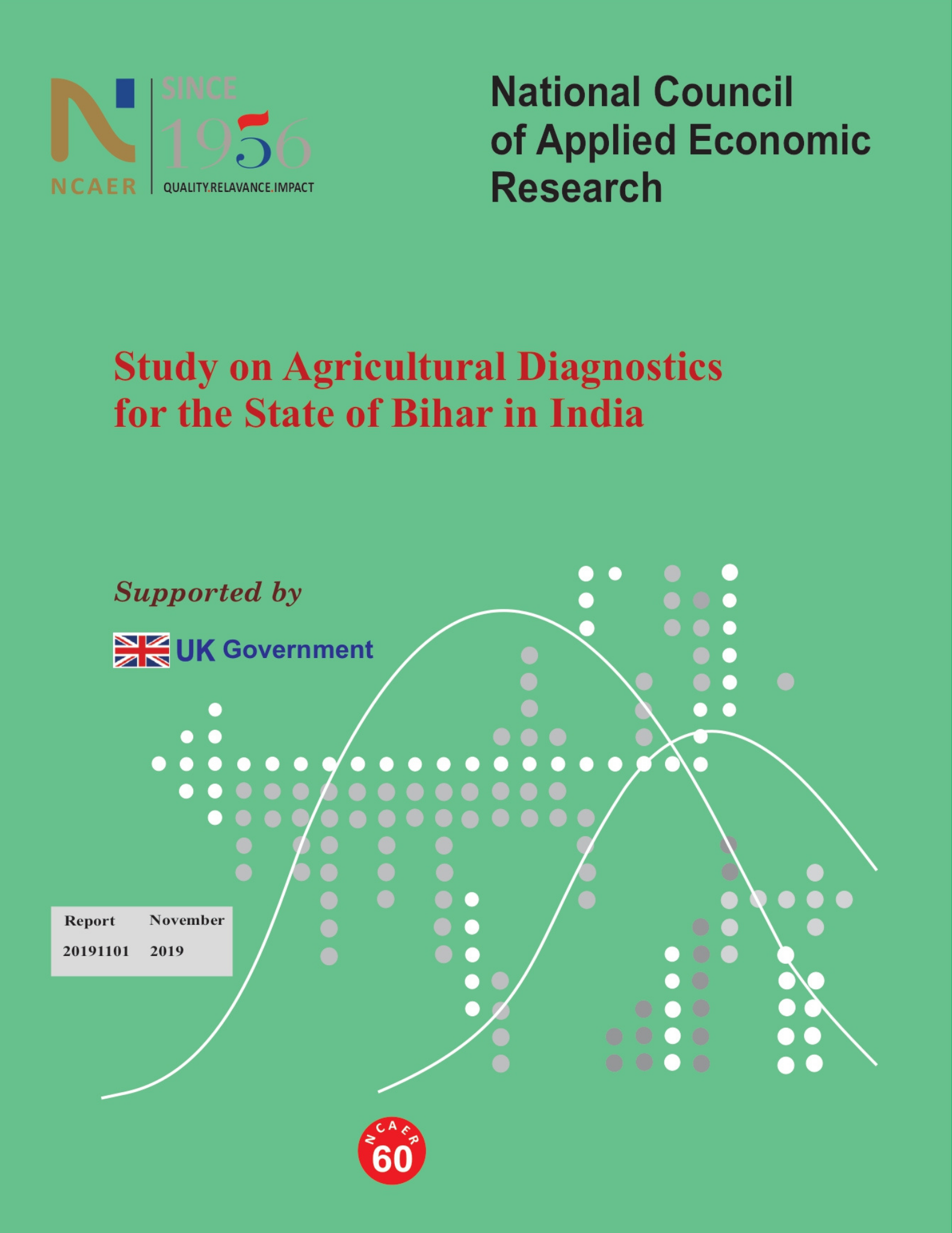Study on Agricultural Diagnostics for the State of Bihar in India
Sanjib Pohit
Saurabh Bandyopadhyay
Avisha Alawadhi
Lavanya Sayal
R.K.P. Singh
Elumalai Kannan
November 2019
Fully 70 percent of its Bihar's rural work force is employed in agriculture, which contributes over a quarter of the state GDP. Hence, rapid agricultural development remains important for Bihar. Recognizing this, the State government started implementing what it called Agricultural Road Maps in 2008, and is currently on its third Road Map (2012-13 to 2016-17), all aimed at increasing productivity growth in the crop and livestock sectors and boosting farm incomes.
Agricultural growth responded well to these new initiatives in their first four years, reaching 3.1 percent per annum during the first Road Map, but declined to 1.3 percent in the second Road Map, averaged about 2.0 percent during 2001 to 2017, and has shown a decelerating trend since 2012- 13.
What explains these trends in Bihar’s agriculture development? To answer these and related questions, NCAER has partnered with DFID, the UK Department for International Development in India, to do an agricultural sector diagnostic study for the state to understand the economic, natural, technological, and political constraints that Bihar agriculture faces, and what it should do to alleviate these constraints. The key goal of this work has been to identify the binding constraints to faster and more sustainable agricultural growth in Bihar. The search for such binding constraints has covered both the crop and livestock sectors, and has looked at land switching from low-value to higher value crops, crop diversification, crop yield improvements, and input intensification.
Agriculture and Rural Development







